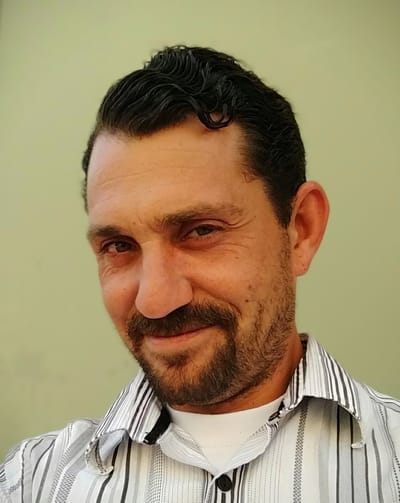There's a peculiar phenomenon I've noticed in the programming community's relationship with AI assistance. We've all experimented with role-based prompting—those careful instructions where we define a senior developer with specific expertise, hoping to extract more nuanced responses. It works, to a degree. But I've discovered something far more powerful: creating consultants who fundamentally disagree with each other.
This isn't about wearing different hats or considering multiple perspectives. It's about building a discourse where technical tension drives innovation.
The Limitation of Single-Role Context
When we prompt an AI with "You are a senior Python developer with distributed systems experience," we're essentially asking for one expert opinion, however well-informed. It's like consulting a brilliant colleague who always agrees with their own fundamental assumptions. The responses improve, certainly, but they lack the friction that produces genuine insight.
What transformed my approach was creating multiple consultants with conflicting philosophies—and letting them argue.
A Practical Example: The Caching Dilemma
Last week, I faced a distributed caching challenge. Instead of my usual approach, I assembled three consultants:
Sarah Chen - A principal engineer from a major tech company who's lived through Black Friday meltdowns. Her systems thinking is shaped by handling millions of concurrent users. Every architectural decision gets stress-tested against the question: "What happens at 100x scale?"
Roberto Martinez - A seasoned startup CTO who's watched companies die from premature optimization. He champions iterative development and has strong opinions about when "good enough" truly is good enough. His mantra: complexity kills more startups than technical debt.
Dr. Yuki Tanaka - A computer science researcher turned consultant who brings academic rigor to every discussion. She won't let anyone hand-wave past consistency guarantees or ignore formal properties of distributed systems. Her pet peeve: engineers who don't understand the theoretical underpinnings of their architectural choices.
The magic happened when I presented them with my caching requirements.
The Constructive Conflict
Sarah immediately proposed Redis Cluster with multiple replicas and automatic failover. "I've seen too many systems crumble under unexpected load. We build for the peaks, not the valleys."
Roberto pushed back hard. "You're solving problems we don't have. We're serving thousands of users, not millions. A simple in-memory cache per service will work fine. We can evolve when we need to."
Yuki interjected with concerns about consistency models. "Neither of you has addressed CAP theorem implications. What's our partition tolerance strategy? How do we handle split-brain scenarios?"
This sparked a genuine technical debate. Sarah detailed cache stampede scenarios she'd encountered in production. Roberto countered with startup post-mortems where over-engineering killed product velocity. Yuki kept both grounded with formal analysis of the trade-offs.
Why Discourse Beats Perspective
The solution that emerged—local caches with a shared invalidation stream—wasn't what any single consultant would have proposed. It emerged from the tension between their viewpoints:
- Sarah's insistence on production readiness ensured we considered failure modes
- Roberto's pragmatism kept the implementation scope manageable
- Yuki's rigor guaranteed we understood our consistency model
This isn't role-playing or thought exercises. It's creating a technical discourse where ideas must defend themselves against informed criticism.
Building Your Own Technical Discourse
The key to making this work lies in creating consultants with:
-
Concrete backgrounds that inform their biases. Not "experienced developer" but "led the migration from monolith to microservices at a fintech, still has nightmares about distributed transactions."
-
Philosophical conflicts that can't be easily resolved. One consultant believes in eventual consistency, another insists on strong consistency. These tensions force deeper thinking.
-
Domain expertise that overlaps but doesn't completely align. They can understand each other's arguments but approach problems from different angles.
-
Evolution over time. As you work with these consultants, they learn from each other. Sarah might grudgingly admit that sometimes Roberto's simple solution is correct. Roberto might start asking "but what happens at scale?" unprompted.
The Unexpected Emergence
What surprised me most was how these consultants developed their own consistency. I'd find myself explaining a problem and suddenly Roberto would raise a concern I hadn't considered—except Roberto is my creation. The discourse had developed its own momentum.
This goes beyond rubber duck debugging or thinking frameworks. It's about creating a space where technical ideas face genuine scrutiny from multiple informed perspectives. The consultants aren't just different views—they're different worldviews about how software should be built.
A Tool for Complex Problems
I now use this approach for any sufficiently complex technical decision:
- API Design: A backend purist, a frontend developer who's tired of bad APIs, and a mobile developer obsessed with payload size
- Performance Optimization: A systems programmer who sees everything as a hardware problem, an algorithms expert who believes in Big-O supremacy, and a pragmatist who just wants the app to feel fast
- Architecture Decisions: An enterprise architect who thinks in patterns, a startup engineer who thinks in time-to-market, and a site reliability engineer who thinks in failure modes
The discourse forces me to defend decisions against informed criticism before they ever see production.
Closing Thoughts
There's something profound about creating a technical discourse rather than just seeking a technical perspective. When consultants disagree—really disagree, not just offer alternatives—they force us to understand not just what we're building, but why we're building it that way.
The next time you're facing a complex technical decision, don't just consider different angles. Create consultants who would genuinely argue about the solution. Let them challenge each other's assumptions. Watch what emerges from the technical tension.
Sometimes the best architecture comes not from consensus, but from the crucible of informed disagreement.


